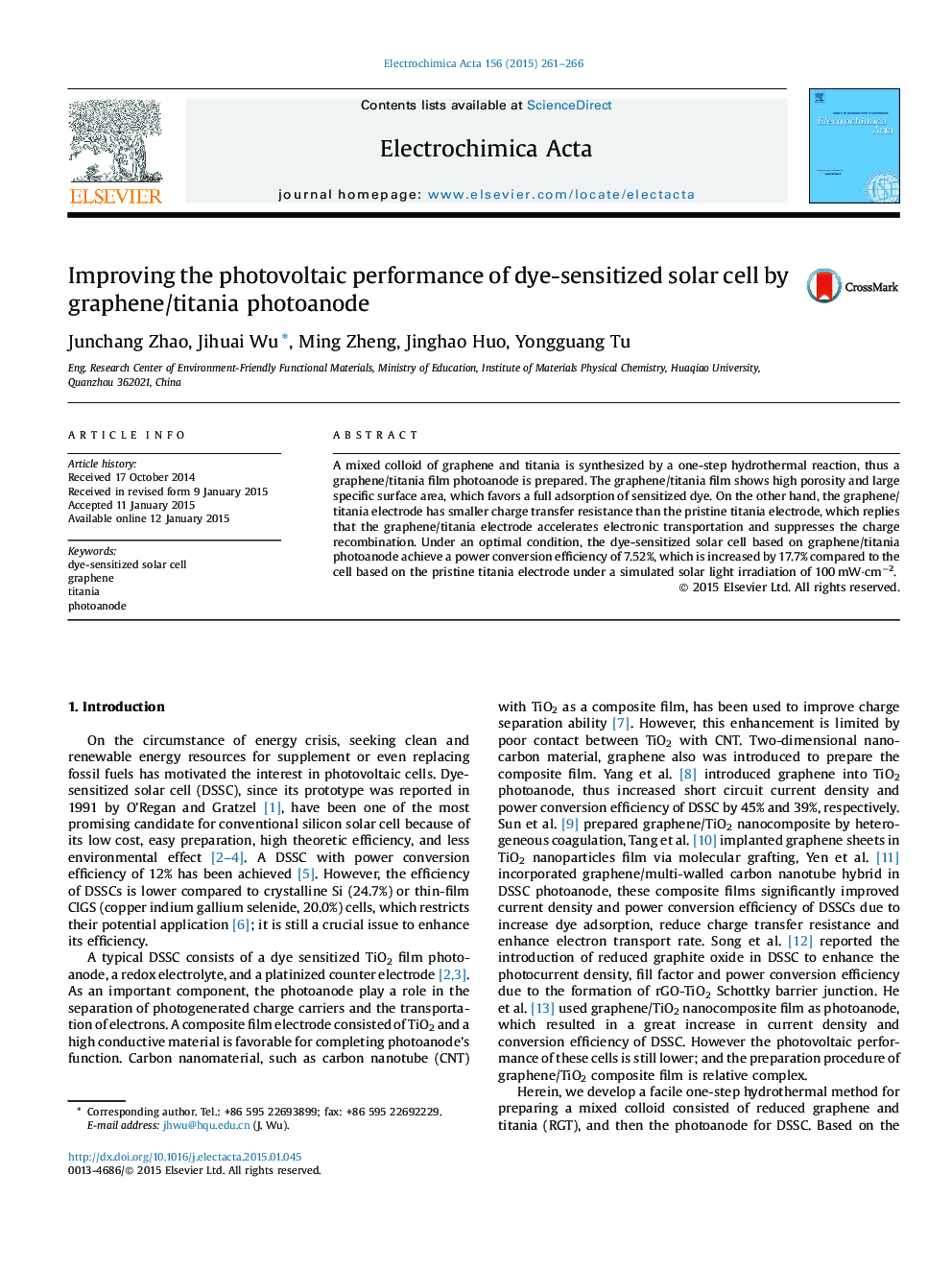| Article ID | Journal | Published Year | Pages | File Type |
|---|---|---|---|---|
| 184527 | Electrochimica Acta | 2015 | 6 Pages |
•A colloid of graphene/titania is prepared, and thus a graphene/titania film is made.•The film shows high porosity, large surface area and small transfer resistance.•The cell with graphene/titania photoanode obtains a conversion efficiency of 7.52%.•Which is increased by 18% compared to the cell with pristine titania electrode.
A mixed colloid of graphene and titania is synthesized by a one-step hydrothermal reaction, thus a graphene/titania film photoanode is prepared. The graphene/titania film shows high porosity and large specific surface area, which favors a full adsorption of sensitized dye. On the other hand, the graphene/titania electrode has smaller charge transfer resistance than the pristine titania electrode, which replies that the graphene/titania electrode accelerates electronic transportation and suppresses the charge recombination. Under an optimal condition, the dye-sensitized solar cell based on graphene/titania photoanode achieve a power conversion efficiency of 7.52%, which is increased by 17.7% compared to the cell based on the pristine titania electrode under a simulated solar light irradiation of 100 mW·cm−2.
Graphical abstractFigure optionsDownload full-size imageDownload as PowerPoint slide
